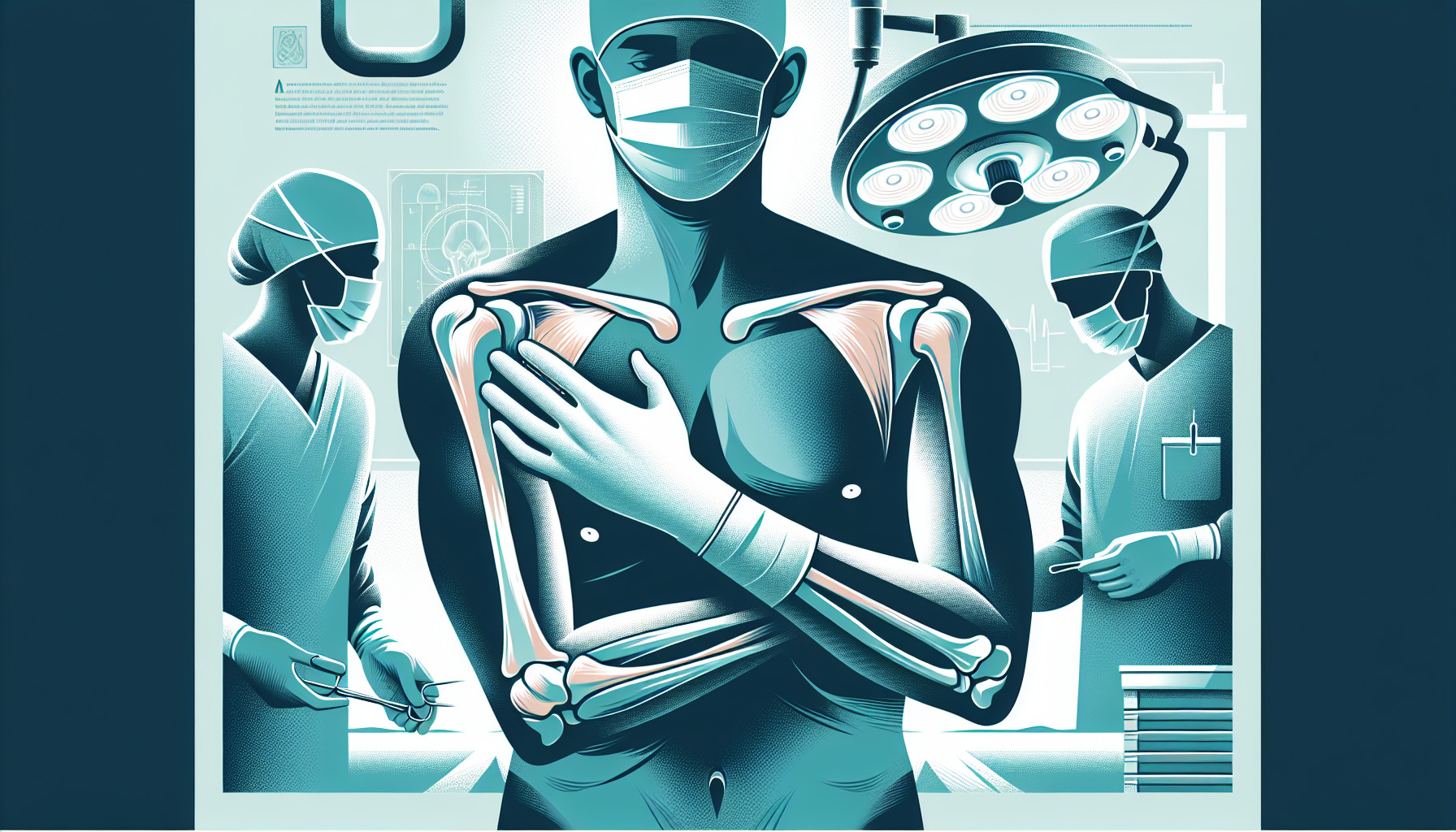Our Summary
This research paper discusses the use of a particular type of shoulder replacement, called a “linked prosthesis,” which is often used in complex surgeries or after tumor removal. Despite its benefits, there have been complications with this device, mainly related to its design and engineering. As a result, in some cases, patients needed additional surgeries to correct issues such as the implant disconnecting. The authors suggest that a redesign of the implant could help to prevent these problems and increase the longevity of the device, making it a safer and more effective option for patients who have already undergone multiple major surgeries.
FAQs
- What is a linked prosthesis?
- What are the complications associated with the linked prosthesis used in shoulder replacement surgeries?
- How could a redesign of the implant improve its safety and effectiveness?
Doctor’s Tip
A helpful tip a doctor might tell a patient about shoulder replacement surgery is to follow the post-operative rehabilitation plan carefully. This typically includes physical therapy exercises to help strengthen the muscles around the shoulder joint, improve range of motion, and prevent stiffness. By diligently following the rehabilitation plan, patients can help ensure a successful recovery and optimal function of their new shoulder joint.
Suitable For
Patients who are typically recommended for shoulder replacement surgery include those with severe shoulder arthritis, rotator cuff tears, fractures, or other conditions that cause significant pain and limited range of motion in the shoulder joint. Additionally, patients who have not had success with conservative treatments such as physical therapy, medications, or injections may be considered for shoulder replacement.
In the case of the linked prosthesis mentioned in the research paper, patients who have undergone complex surgeries or tumor removal in the shoulder joint may benefit from this type of implant. However, it is important for patients and their healthcare providers to carefully weigh the potential benefits and risks of using this specific device, considering the potential for complications related to its design and engineering.
Ultimately, the decision to undergo shoulder replacement surgery, including the use of a linked prosthesis, should be made on a case-by-case basis after thorough evaluation by a healthcare provider. It is important for patients to discuss their treatment options, including the potential risks and benefits, with their healthcare team to determine the most appropriate course of action for their individual needs and circumstances.
Timeline
Before shoulder replacement surgery:
- Patient experiences chronic shoulder pain, limited range of motion, and difficulty performing daily activities.
- Patient undergoes diagnostic tests such as X-rays, MRIs, and physical exams to determine the extent of damage in the shoulder joint.
- Orthopedic surgeon recommends shoulder replacement surgery as a treatment option.
- Patient undergoes pre-operative evaluations and physical therapy to prepare for surgery.
After shoulder replacement surgery:
- Patient undergoes the surgical procedure to remove damaged parts of the shoulder joint and replace them with a prosthetic implant.
- Patient stays in the hospital for a few days for post-operative care and monitoring.
- Patient begins a rehabilitation program to regain strength, flexibility, and range of motion in the shoulder.
- Patient follows post-operative instructions and attends follow-up appointments with the surgeon to monitor progress and address any complications.
- Over time, patient experiences improved shoulder function, reduced pain, and increased quality of life with the new shoulder joint.
What to Ask Your Doctor
- What type of shoulder replacement is being recommended for me?
- What are the potential risks and complications associated with this specific type of shoulder replacement?
- How long can I expect the shoulder replacement to last?
- What is the recovery process like after shoulder replacement surgery?
- Are there any alternative treatment options to consider before proceeding with shoulder replacement?
- How experienced are you in performing shoulder replacement surgeries?
- What is the success rate of this specific type of shoulder replacement in patients similar to me?
- Will I need physical therapy after the surgery, and if so, for how long?
- How soon can I expect to return to my normal activities after shoulder replacement surgery?
- What steps can I take to ensure the longevity and success of the shoulder replacement?
Reference
Authors: Mohammed AA, Frostick SP. Journal: Musculoskelet Surg. 2016 Apr;100(1):25-9. doi: 10.1007/s12306-015-0384-x. Epub 2015 Oct 29. PMID: 26514140
